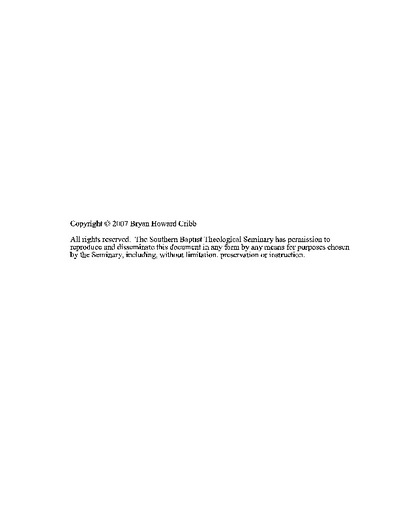| dc.description.abstract | This dissertation argues that a definable and distinct genre of death story does exist in the Old Testament and that form critical analyses of these stories can yield significant theological insights. Chapter 1 establishes the methodology and principles that govern the study.
Chapter 2 presents an overview of death in the ancient Near East and Israel. The information in this chapter introduces the reader to the topic of death in the ancient world, and it provides a basis for comparison with the thanatology derived from the death stories.
Chapter 3 surveys death accounts in the ancient Near East and in the Old Testament and classifies the various death accounts in the Hebrew Scriptures as notices, reports, or stories. In addition, this chapter justifies the classification of some accounts as stories instead of reports, and it establishes and describes the typical "death story."
Chapter 4 engages in a form critical exegesis of the death stories in the Old Testament. Nine stories are analyzed. These include the death stories of Sarah (Gen 23:1-20), Abraham (Gen 24:1-25:11), Jacob (Gen 47:28-50:14), Joseph (Gen 50:22-26), Aaron (Num 20:22-29), Moses (Deut 31:1-34:12), Joshua (Josh 23:1-24:30), David (1 Kgs 1:1-2:12; 1 Chr 23:1-29:20), and Hezekiah (2 Kgs 20:1-21).
The method of analysis follows the generally accepted form critical process--which involves an investigation of the form/structure, genre, setting, and intention of the text. To this list of four, this study adds an introduction to the literary and historical context of the texts. Each story investigated includes a section detailing some initial theological conclusions.
Chapter 5 serves as the conclusion of the dissertation. It determines the success of the study in achieving its stated aims. In addition, it summarizes and synthesizes the various theological and thanatological conclusions based on the form critical analyses of chapter 4. Finally, it offers some concluding thoughts on the significance of the study for biblical form critical exegesis. | en_US |

